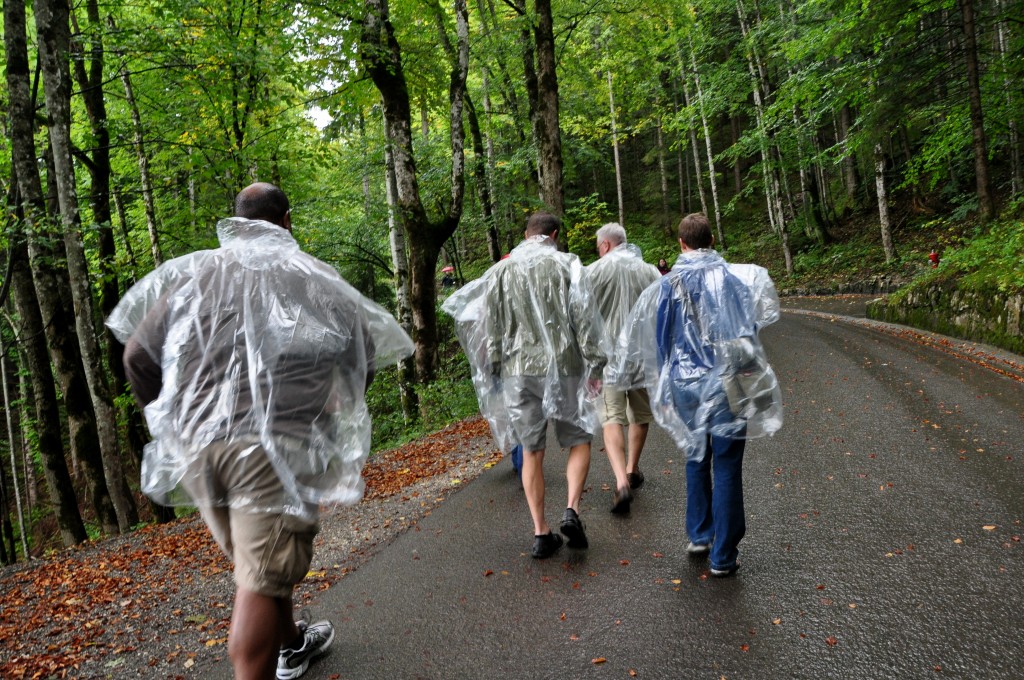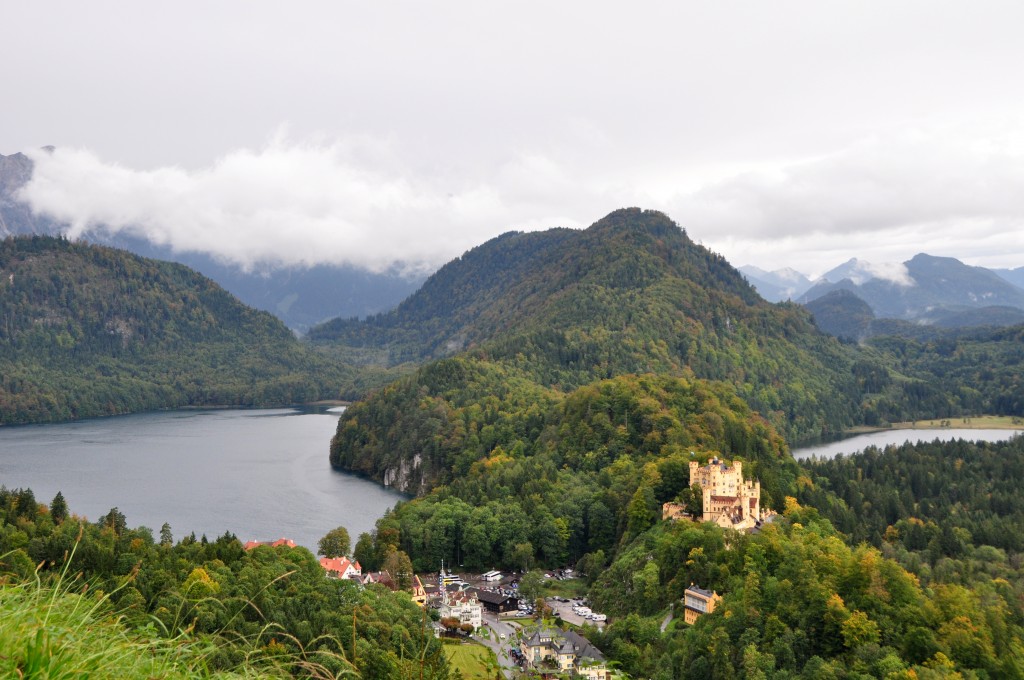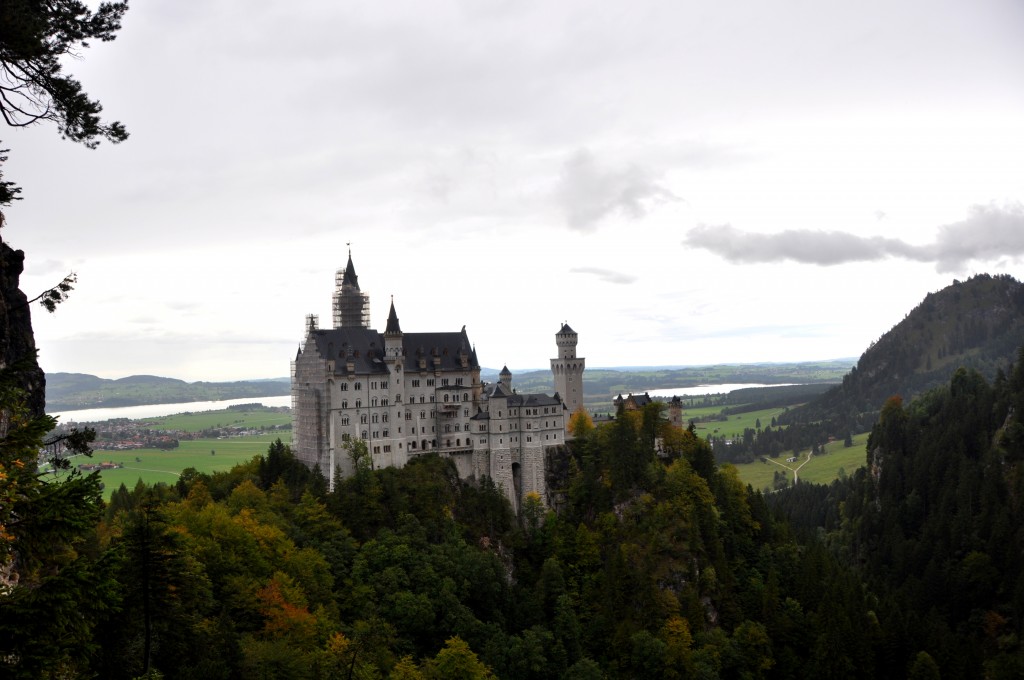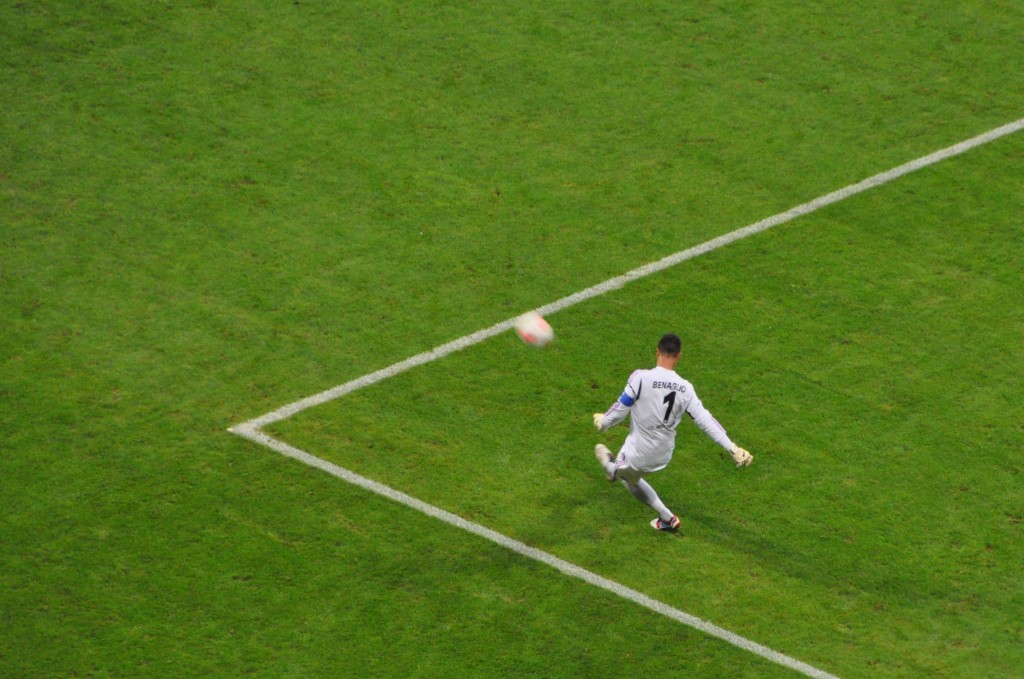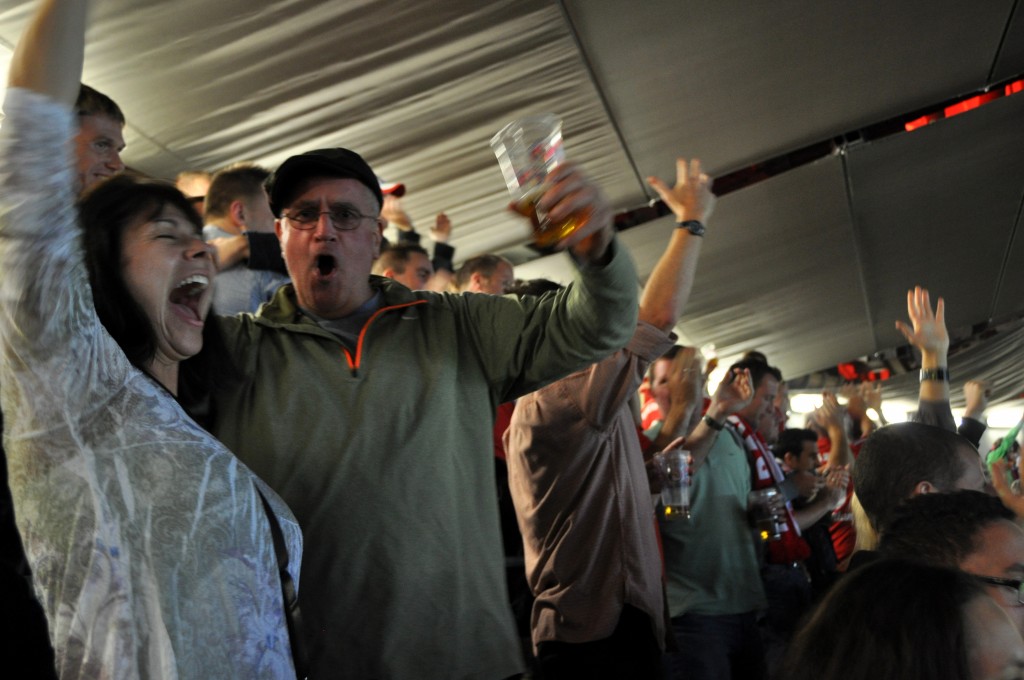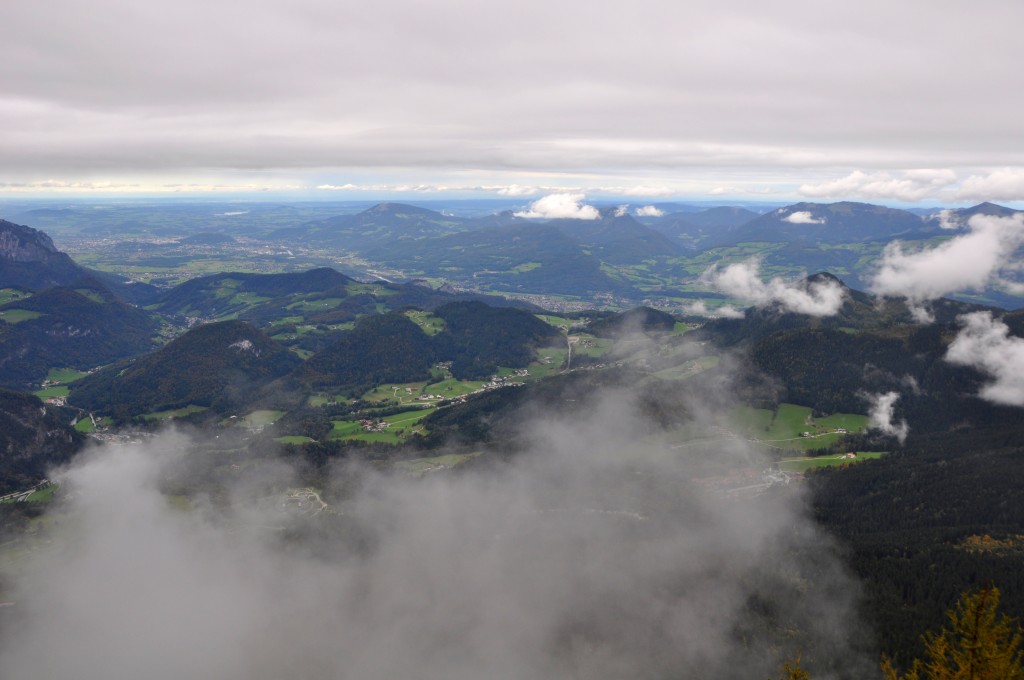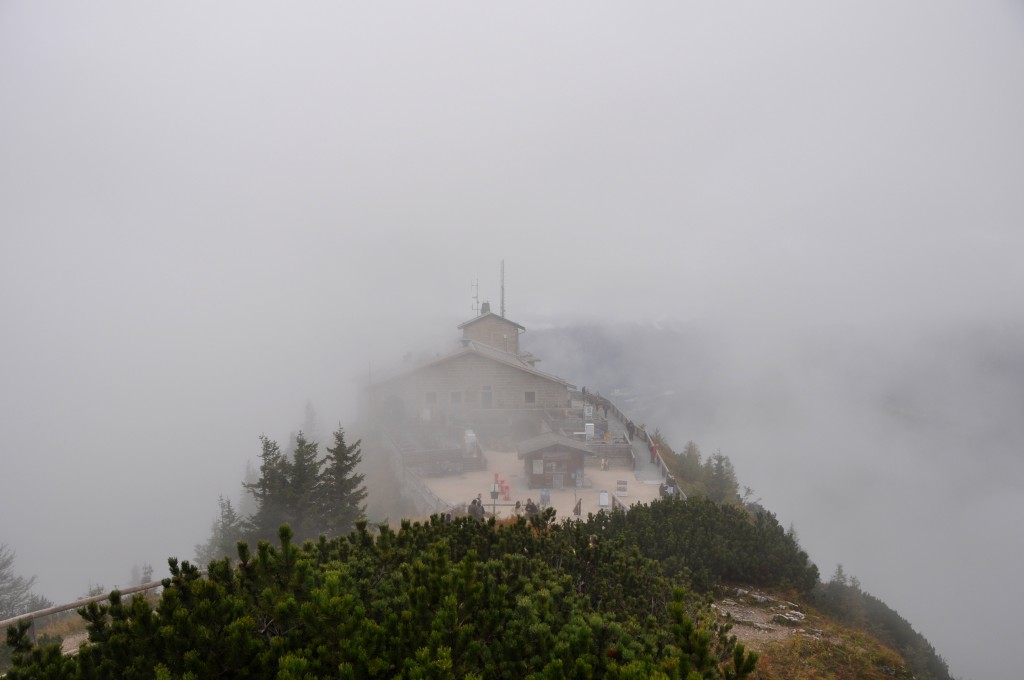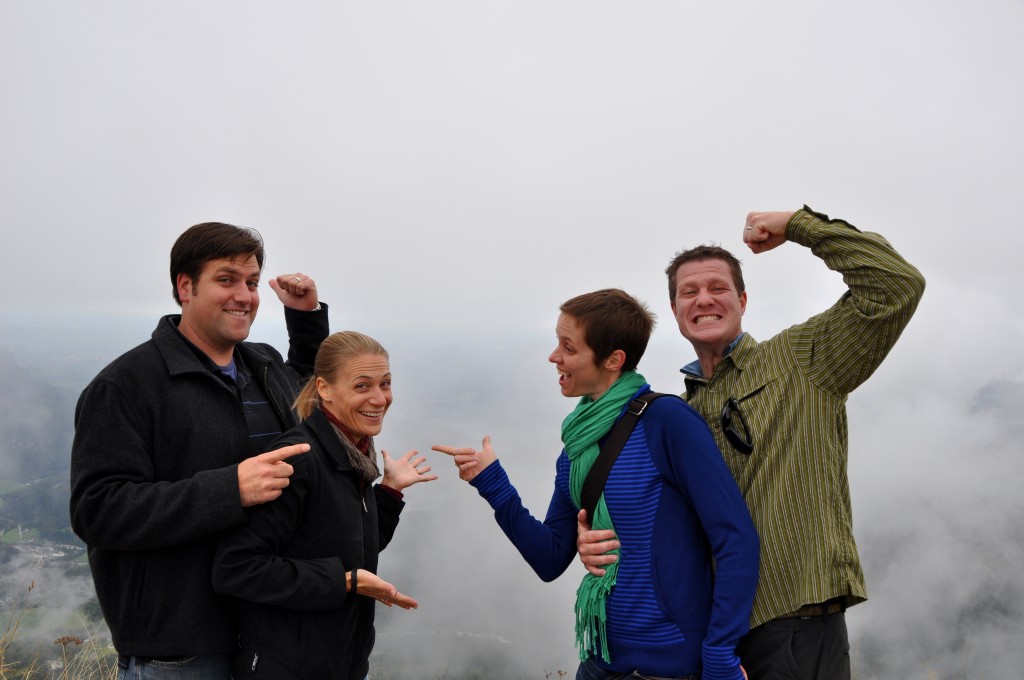Bavaria – Germany’s Texas and arguably the most scenic corner of the country. There is more to Bavaria than Oktoberfest and Lederhosen believe it or not!! When in need of a break from tipping back Maβe, we took advantage of what Bavaria had to offer.
Neuschwanstein – An opera lover, King Ludwig II hired a stage designer instead of an architect to help him create his castle. Started in 1869, the structure was never finished and Ludwig only lived in it for approximately 170 days.
Despite rainy skies, we suited up with newly-purchased, personal sandwich bag-style ponchos and began the long trek up hill to Schloss Neuschwanstein.
Half a mile from Neuschwanstein, across the valley, is Schloss Hohenschwangau, where Ludwig actually spent most of his childhood. Hohenschwangau was originally built by the knights of Schwangau in the 12th century and then remodeled by Ludwig’s father between 1832 and 1834.
Ludwig II was king from 1864 to 1886, during which time he spent unfathomable amounts of money building fairy-tale castles throughout Bavaria. In 1886 the government began to be suspicious that Ludwig had “taken leave of his senses” and he was de-throned shortly after being declared insane. He was found drowned only two days later.
Ludwig’s legacy remains strong and visible throughout the world though, just ask Mr. Walt D!
Dachau – Our second visit to Dachau was just as educational and humbling as the first. When people think of WWII and concentration camps, they usually think of Auschwitz and Dachau. Many people, myself included, can’t name any others. However, each of these infamous concentration camps actually had dozens of “sub-camps” which fed into the larger camps and whose inhabitants suffered in equally as horrid, if not worse conditions. The sheer quantity of concentration camps and sub-camps that existed is deplorable, and had been totally unknown to me, personally, until this visit to Dachau.
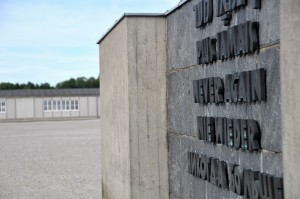 The Allach sub-camp was established for the BMW Company in 1943 to produce engines. Over 4,000 prisoners lived in the Kaufering sub-camp and were required to build bunkers. I found the story of Friedrich Schafranek, and Austrian Jew held at Kaufering sub-camp, to be particularly gripping.
The Allach sub-camp was established for the BMW Company in 1943 to produce engines. Over 4,000 prisoners lived in the Kaufering sub-camp and were required to build bunkers. I found the story of Friedrich Schafranek, and Austrian Jew held at Kaufering sub-camp, to be particularly gripping.
Typhus was a huge problem at Kaufering, and even though the prisoners liked to say that the bacteria were deliberately put in the soup to kill them, they knew it was because they “were all covered in lice from head to toe.” Friedrich saw a jacket move all by itself, on account of the lice. Friedrich and his friend Hans both contracted Typhus in December of 1945. One morning Friedrich woke up and he looked to Hans, who was next to him. “Maybe he wanted to say something to me, because his face was lying on my face right next to my ear. He was lying dead on top of me.” Hans’ death actually gave Friedrich courage to survive. “It renewed my courage over and over again. I always repeated the same sentence to myself: I must outlive Hitler, I must!” Source: KZ – Gedenkstätte Dachau, Haus der Bayerischen Geschichte
There are thousands of stories like Friedrich’s. Sadly, the majority of them will never be told.
FC Bayern München – Germany’s most beloved (and successful) soccer team! We watched Bayern München beat Wolfsburg in front of a crowd of 71,000.
I know Europeans don’t mess around with their Fuβball, but I still wasn’t expecting what happened when the goalie from the opposing team faked an injury! Within the first few minutes of the match, the Wolfsburg goalie moved away from the goal and was on the ground. Meanwhile Munich scored a goal and the Wolfsburg goalie continued to lie on the ground, grabbing his calf. No one came to his aid for several minutes. After some time, the support staff arrived and he stood up again to begin playing. The crowed went nuts. The whistling was deafening. It was so high pitched and lasted so long that I was physically in pain – no joke. Needless to say Munich wasn’t awarded the goal. For the next 85+ minutes, anytime the Wolfsburg goalie came near the ball, the piercing whistling commenced again. It was like clockwork!
No sweat off Munich’s back though. Final score: 3-0. Schieβ! Tor! Wie Bayern! Wie Bayern!
Eagle’s Nest – In 1939 Martin Bormann decided to gift Hitler with a hill-top lodge for his 50th birthday in the mountains of Berchtesgaden. Again, the weather was not in our favor, but every once in a while the clouds would break and you could get a glimpse of spectacular alpine views.
Located at 1834m/6017ft, Kehlsteinhaus, Kehlsteinstraβe (road leading up to Eagle’s Nest and highest mountain road in Germany), five tunnels, and 427ft elevator shaft took 13 months to complete at a [current adjusted] cost of 113 Million Euros. 3800 men worked in the construction of the lodge and 10 lost their lives: 5 during a rockslide, 3 during the tunnel construction, Bormann’s personal driver slid down a hill in his vehicle, and another man was an “Opfer einer Gewalttat” (victim of a violent act). Hitler visited Kehlsteinhaus less than a dozen times, due to the thin air and his fear of heights.
Today, Kehlsteinhaus is mainly a restaurant, which donates profits to charity. Maybe next time we’ll actually get to enjoy the view.

